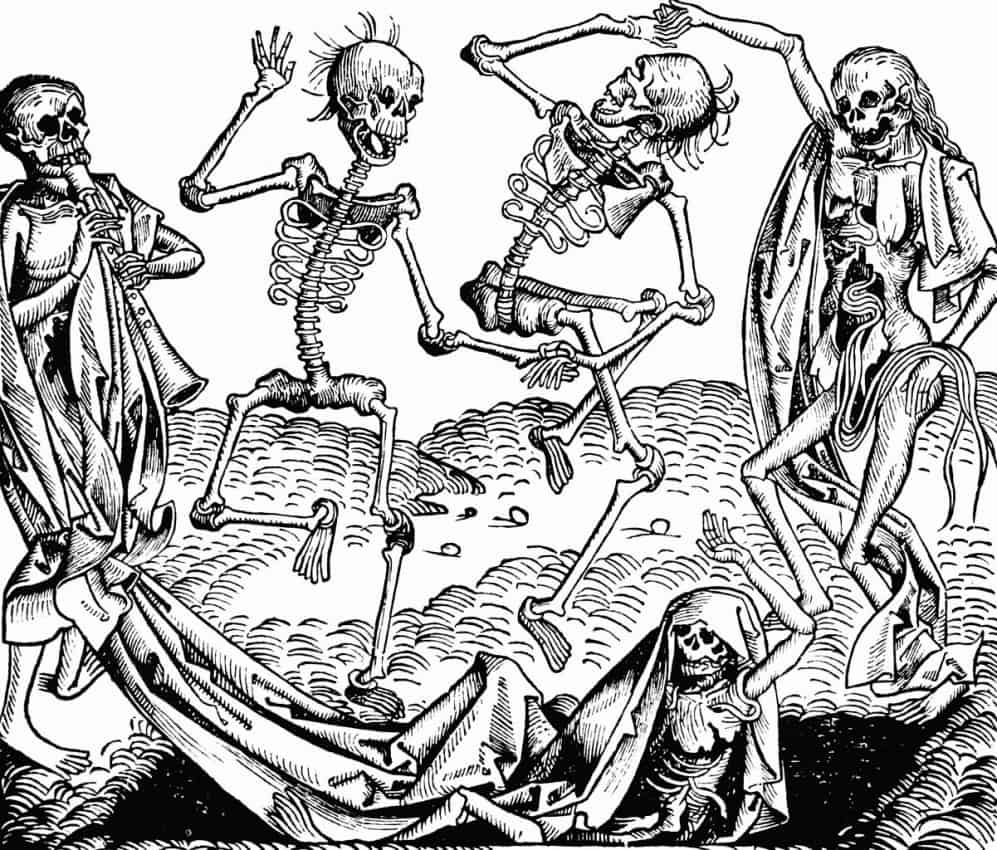
In the 21st century, our relationship with death has become convoluted and murky. We live in an era where medicine and science have extended our lifespan dramatically. We want to live forever and often ignore the prospect of dying.
So we move forward, seeking immortality through any means possible. We try to avoid thinking much about our end and — when that robed visitor comes to claim our loved ones — we are often tragically blindsided by it.
While our relationship with death has always been a complicated one, we used to be much closer with the reality of life’s end. Depictions of dancing skeletons — either whimsically waltzing with each other or partnering with the living — have been around since the late Middle Ages. They were constructed to remind people that death is universal and it visits us all — peasants and kings alike.
These illustrations personifying death, referred to as Danse Macabre or the Dance of Death, were produced at a time when the plague spread across Europe, leaving millions of people dead in its wake. The people of the 15th century were bombarded with the reality of death. It’s strange that one from this period would still need another reminder of their mortality.
Danse Macabre is just one example of a memento mori — a Latin phrase meaning “remember, that you must die.” It is a symbolic representation that has been practiced in earnest since at least early Christianity, and the history of memento mori may reach as far back 2nd century BC — with depictions of skeletons in mosaics found in Pompeii. However, the Victorian era really embraced memento mori in mourning jewelry, mantle pieces and even in photography.
Death photography became a common practice in the 18th century for it allowed people a permanent reminder of both the reality of death and the loved one who was lost. It was a way for people to mourn and to remember.
Today we rarely think of death, and when we do it is often accompanied by anxiety. We are far removed from death in both body and in mind. But we die. We can’t avoid it. So why not embrace our mortality?
In recent years, death positive movements like the Order of the Good Death — a collective of funeral workers, academics, artists, writers and communicators — have tried to change our modern perceptions of this inevitable stage of life.
The death positive movement includes a variety of things with the mission of taking “a more holistic and healthy approach to death,” Karla Combres of Death Positive Saskatoon explained to the Sheaf.
Throughout our history, death was a normal part of day to day life and people knew what to do when someone died. The movement is looking to reclaim that knowledge.
“It is an attempt to approach death as a natural human experience and take it out of the shadows so that it’s not such a scary taboo thing. And in doing so, looking at all the alternatives and options. Death has been sort of taken away from us,” Combres said.
Throughout the year, Combres hosts Death Cafés, a place where people can have an open conversation about death. She is also part of the Saskatoon Threshold Singers, a choir group that sings at the bedside of those who are dying.
The death positive movement helps people move past anxieties that surround death.
And now we may not need to place a skull on our bookshelf to remind us about our end because memento mori has gone digital. WeCroak is an app that sends you reminders of your death daily. Five times a day the app will invite you to contemplate your mortality with quotes about death.
While it may seem counterintuitive to many, being mindful of our death makes our lives become more meaningful because we recognize how we need to maximize the little time we have.
—
Erin Matthews/ Opinions Editor
Graphic: Public Domain / The Dance of Death (1493)